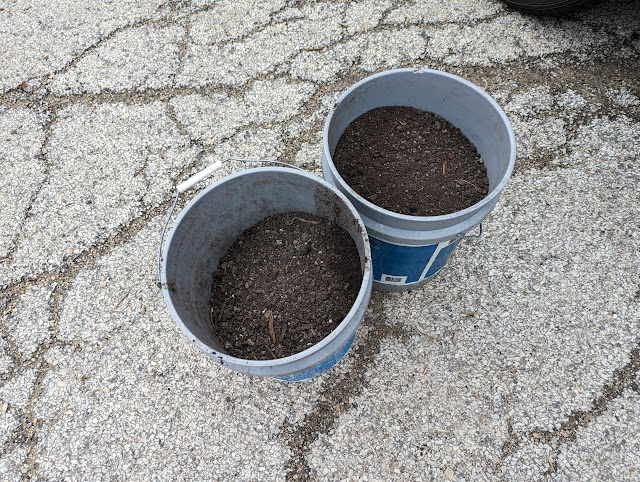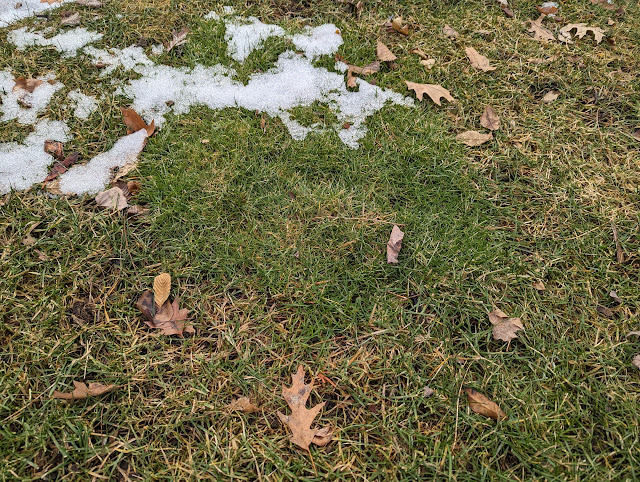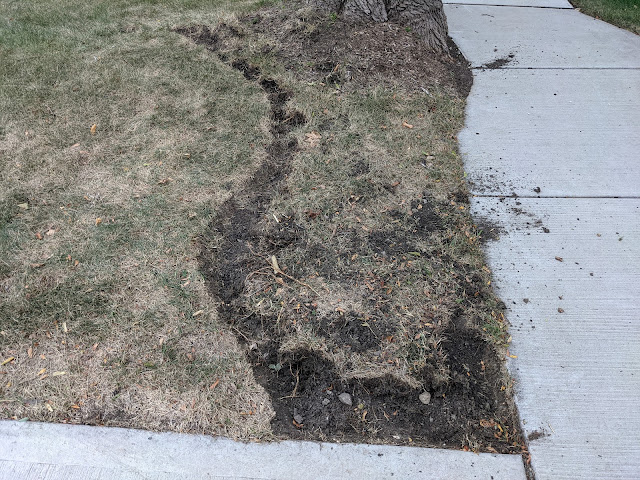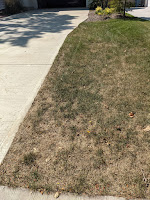Other Side of Parkway - Biosolids Applied - March 2023

A few days ago, I shared some photos of the initial application of municipal biosolids to our parkway - the part of the parkway that is closest to the driveway. I mentioned that I would need a few more trips of 10-12 gallons of material to finish the parkway. This past weekend, I made a stop at the biosolids station and filled up my 2+ buckets. I brought the material home and spread it on the smaller section of parkway that is on the other side of the driveway. This is the IB2DWs parkway area. See below for a look at the material after I raked it in: This section of grass is particularly rough to deal with and be successful with grass. It is not-so-great soil that also sees A LOT of road debris and gets filled up with those tiny Locust leaves each Fall. My neighbor's section is irrigated (I think), so his does better than mine. Looking at these photos - including another one below - I'm thinking that I could put a second application...












